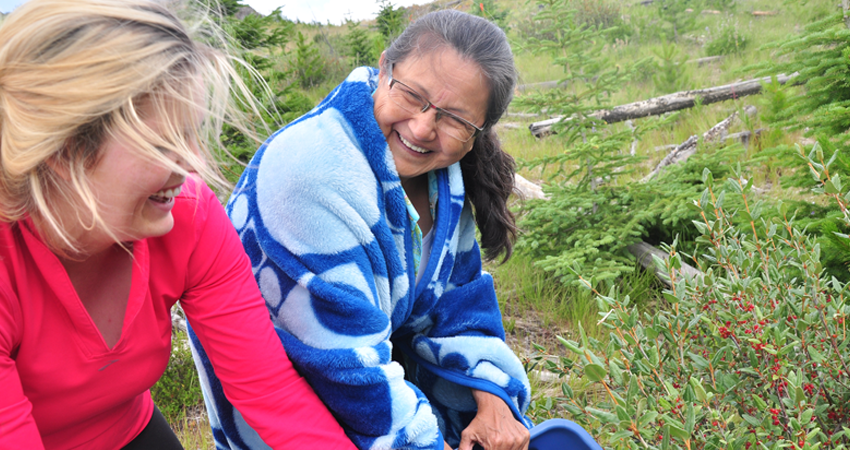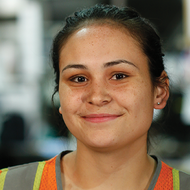Highland Valley Copper (HVC) Operations is located in territory traditionally occupied by the Nlaka’pamux people. For many generations, the Nlaka’pamux have used local plants for medicine, food and other traditional activities.
In recent years, Nlaka’pamux communities have asked about dust emissions from the mine and whether there is a potential impact on local ecosystems and on those traditional plants used by community members. To answer this question, HVC and the Nlaka’pamux communities jointly launched a study to examine dust deposition from the mine and assess any potential effects on traditional plants. The study was designed to address Nlaka’pamux community members’ concerns regarding the potential impact of mine dust on the land and the traditional plants in the Highland Valley area.
First Steps
The study started with examining how dust from the mine was travelling by collecting and analyzing lichens, which are particularly sensitive to dust because they are physiologically dependent on atmospheric deposition for nutrients. The study compared an area within 10–15 kilometres of the mine boundary with a reference area identified by Nlaka’pamux community participants as dust-free and good for comparison to dust-affected areas. Community members were also engaged to ensure the study included specific gathering areas where concerns about dust had been identified.
This information on dust patterns was then used to develop the next phase of the study—determining any potential effect of the dust deposition on traditional plants. Nlaka’pamux workshop participants decided to focus the study on the shoots and berries of soapberry, which is important to the Nlaka’pamux for medicine, food and other values, and is ubiquitous across the area around HVC. From there, fieldwork for the traditional plants study was carried out within the mine study area and in the reference area.
Engaging Communities
Community engagement consisted of six workshops over the course of the study, in which Nlaka’pamux representatives were involved in setting study objectives, developing the study design and methodology, interpreting results, and planning for sharing results with the communities. The study also included collection of berries and other plant samples and soils led by Nlaka’pamux elders and youth, including a field workshop with elders to show the techniques used for harvesting and processing the various parts of the plant. Youth participated in the workshop as an opportunity to learn traditional harvest techniques. Finally, to address community concerns about any changes that could occur during processing, not only were the berries and leaves analyzed, but the tea and juices as well.
Finding Results
Overall, the traditional plants study indicates that, while there is a measurable effect of mine dust on soapberry plant parts in the study area and derivatives such as tea and juice, the levels of metals in these materials are generally very low and it is safe to consume soapberry products within the study area.
Of the positive outcome from the exercise, Peter Martell, Superintendent, Environment and Community Affairs, HVC, commented: “Working with input and guidance from the Nlaka’pamux, we have been able to comprehensively study this issue and answer the questions raised, as well as increase our understanding of how dust from the operation interacts with the local environment.”
This case study can be found in Teck’s 2015 Sustainability Report. For more case studies or for our complete performance reports, visit www.teck.com/sustainability.



